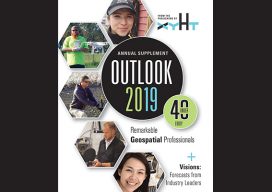Category Archives: Aerial/UAS

Aerial Self-sufficiency
Above: Universal Studios, Florida A large risk-assessment and data-analytics company created its own internal system to collect imagery, write software, and develop processing workflows. If a private company or public agency is large enough, it may be able to internalize all of the processes for its services rather than having to outsource any. For example, it might...

Elena Buenrostro
Founder & CEO, Women Who Drone New York, USA By the summer of 2018, the Federal Aviation Administration of the U.S. had already reached the 100,000 mark for part 107 small UAS operator registrations. The number of units for non-military UAS is expected to triple to over three million units by 2022—or more. Elana Buenrosto...
Surveyors as Movie Makers
Above: Each virtual camera position needs to be properly oriented for what you want the viewer to see. Credit: Rodrigo Garcia. Opposite: The movie maker places several virtual camera positions to form a path for a fly-through effect on scan-based movies. Credit: Leica Geosystems. In my last Geodude article, I drew an analogy between surveyors...

Microdrones Expands in Asia
Microdrones Expands into Asia with Acquisition of Aircam UAV Technology (Press release – January 16, 2019) New York, NY – As part of an ongoing global growth initiative, Microdrones has acquired Aircam UAV Technology (“Aircam”), a 64 employee Chinese company with its main location in Foshan, an hour-drive from Guangzhou in Southern China, and a branch...

Geomatics at UAA
Above: Matt Santiago, current UAA geomatics student, is perfecting his surveying technique in the “classroom,” i.e. the South Fork of Chester Creek on UAA’s campus. The University of Alaska, Anchorage’s Geomatics Department continues to grow and place all its students in jobs at graduation. Matt Santiago arrived in Alaska wearing Air Force blue. When he...

GPR on a Drone
Above: From left – Jim Salazar, Mario Carnevale, Ken McBride, Myles Danforth, Alexey Dobrovolskiy (the author), and Janis Kuze. An international research team used new UAV and GPR technology to locate a lost U.S. airplane 300 feet below the ice in Greenland. On July 4, 2018, at Greenland’s Ice Cap, Jim Salazar and Ken McBride...
